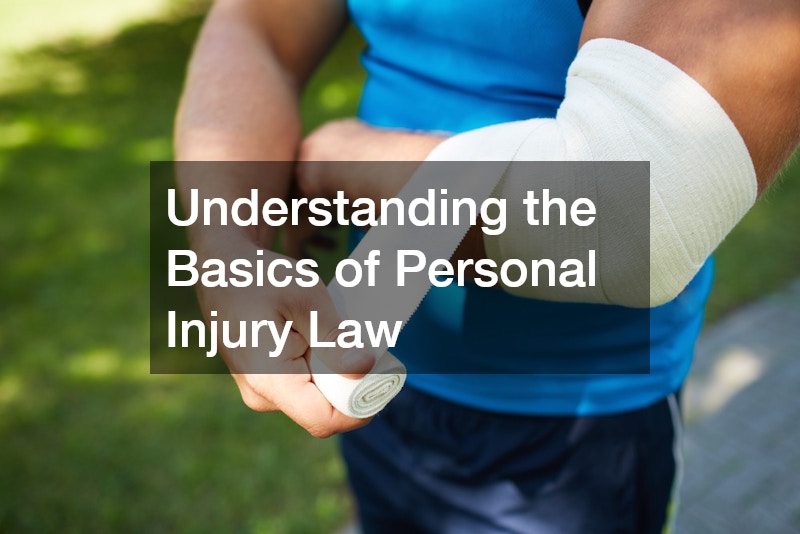
In this article, we will explore the fundamental concepts of personal injury law, helping you understand your rights, the legal process, and the factors that can influence the outcome of a personal injury case. Whether you’ve been involved in an accident or are seeking further information, this guide offers a clear overview to navigate these legal waters effectively.
Personal injury law serves as a means for victims to seek compensation for their losses. This process can be complex but is essential for attaining justice after an incident.
By grasping the basics of this area of law, individuals can empower themselves to take the necessary steps to protect their rights.
In the following sections, we will dissect the elements of personal injury law, examine the types of cases most commonly encountered, and outline the pathways to pursuing a claim. It’s important not only to understand your rights but also the complete process involved in appealing for damages.
What is Personal Injury Law?
Personal injury law encompasses legal disputes that arise when one person suffers harm from an accident or injury, and someone else might be legally responsible. The foundational principle in personal injury cases is negligence, which indicates that one party’s failure to exercise reasonable care led to another party’s suffering.
This area of law determines whether an injured party can prove that the responsible party breached a duty of care leading to their injuries. Various laws are applicable, depending on the jurisdiction, and the specifics of the incident under scrutiny. Empowering victims to claim damages is at the heart of personal injury law.
The concept of liability plays a crucial role in personal injury law. To win a case, the victim must demonstrate that the defendant bears legal responsibility for the accident, either through direct actions or through negligence, which can sometimes be less obvious. Knowledge of these principles is vital for anyone facing such situations.
What Types of Cases Fall Under Personal Injury Law?
This section will discuss the various types of personal injury cases, including car accidents, slip and fall incidents, medical malpractice, and more, highlighting the common characteristics of each. Car accidents are the most prevalent, often involving negligent driving behaviors such as speeding or distracted driving.
Slip and fall injuries occur when a property owner fails to maintain a safe environment, allowing hazardous conditions to cause injuries. These cases demand a careful assessment of liability and the circumstances leading to the incident.
Medical malpractice cases arise when healthcare professionals fail to meet the standard of care, thus causing harm to patients. Each type of case varies in complexity and the criteria involved in proving fault, but they all revolve around the central theme of negligence and accountability.
How Do I Know If I Have a Valid Personal Injury Claim?
Understanding whether you have a valid personal injury claim is essential. This section will outline the criteria for a successful claim, including negligence, liability, and damages. To establish negligence, you must show that the other party had a duty, breached that duty, and caused damage as a direct result of that breach.
Next, proving liability is key, as it determines who is held responsible for the injuries. This often involves gathering evidence, witness statements, and possibly expert testimony to support your case. Therefore, thorough research and documentation can significantly enhance your chance of a successful outcome.
Lastly, you’ll need to assess the damages incurred – both economic and non-economic. These could include medical expenses, lost wages, pain and suffering, or emotional distress. Properly quantifying these damages plays a vital role in ensuring you receive compensation that reflects the full extent of your injuries.
What Should I Expect During a Personal Injury Lawsuit?
This part will walk through the steps of a personal injury lawsuit, from filing a claim, through discovery, to potential settlement or trial, providing insights into what to anticipate at each stage. Initially, the process begins with filing a claim against the responsible party’s insurance. This step officially launches the legal process.
Once a claim is filed, the discovery phase follows, during which both parties exchange evidence and information. This period is critical as both sides prepare their cases for a potential trial. It often involves depositions, document requests, and interrogatories to build a strong argument.
Ultimately, the majority of personal injury cases settle before reaching trial. During settlement negotiations, parties will discuss potential compensation amounts, which can often resolve the case without the uncertainty of a courtroom verdict. Understanding this process can help you prepare and make informed decisions.
Understanding personal injury law is crucial for anyone considering a claim. With knowledge of the types of cases, the requirements for validity, and the legal process itself, individuals can make informed decisions to protect their rights and pursue justice. Armed with this understanding, you can navigate the complexities of personal injury claims more confidently.
It’s imperative to consult with a qualified personal injury attorney who can guide you through the legal maze and help maximize your chances of a successful outcome. There are nuances in each case; so having an expert on your side can make all the difference.
By comprehensively grasping the principles of personal injury law, individuals can better advocate for themselves and their right to compensation. Remember that seeking justice is not just about being made whole again; it’s also about holding those responsible accountable for their actions.




